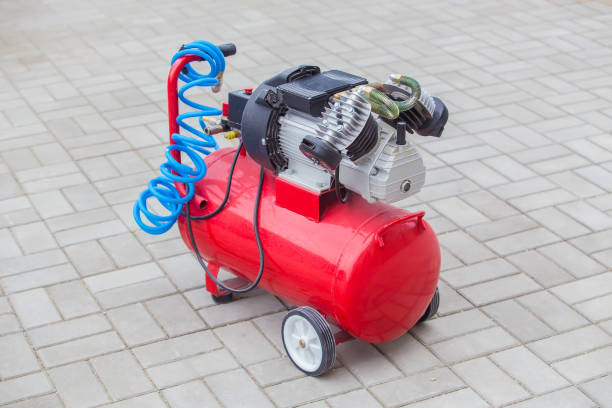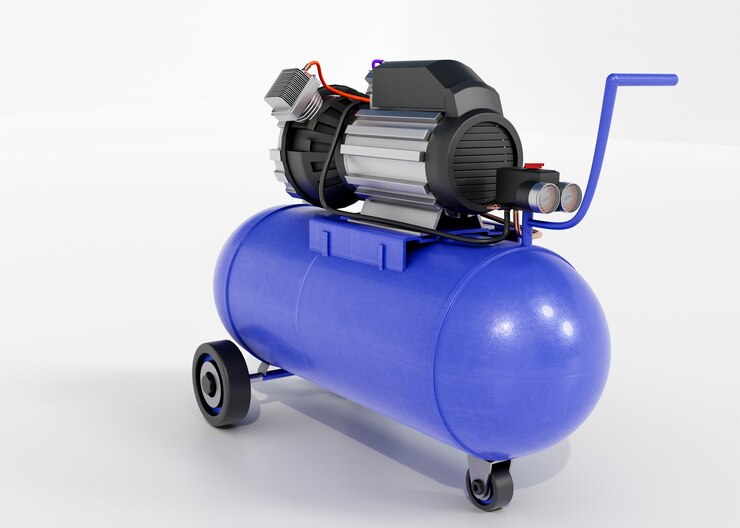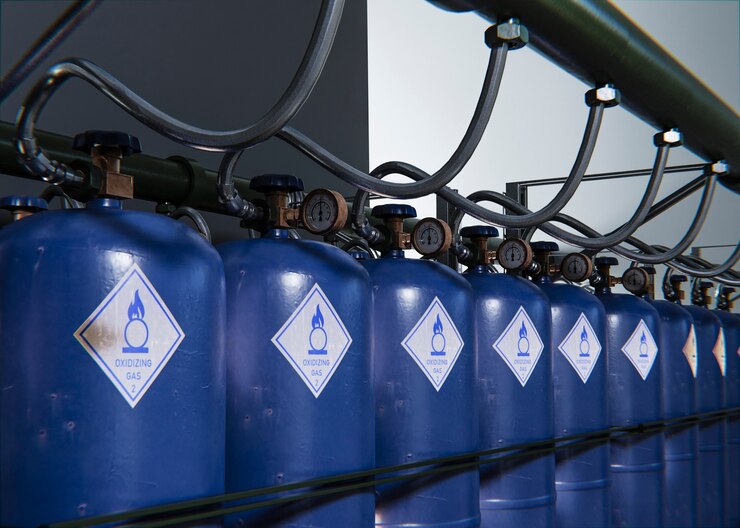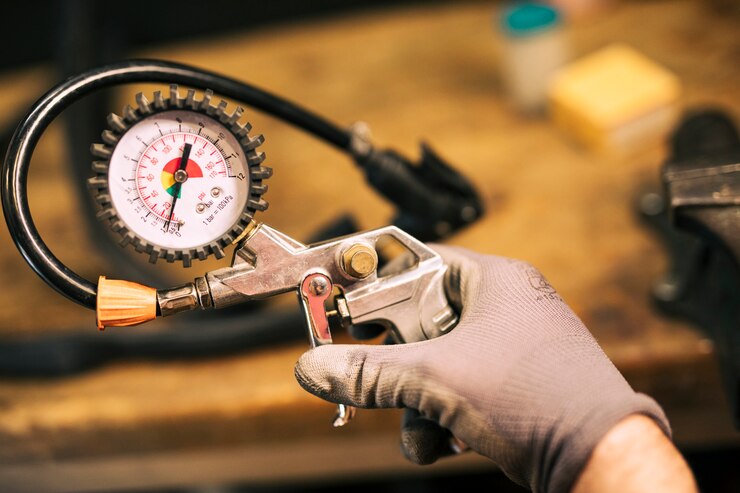A Complete Guide: In a reciprocating piston air compressor
The Reliable Workhorse: Understanding and Maintaining Reciprocating Piston Air Compressor
A mainstay of both DIY projects and industry, a reciprocating piston air compressor provides compressed air for a variety of uses. Its dependability and simplicity of usage make it a popular option for everything from inflating tires to powering pneumatic machines. But problems can arise with even the trustiest workhorse. This thorough book explores the world of reciprocating piston air compressors, including their operation, typical difficulties to solve, methods for reducing noise, best practices for prolonging lifespan, and helpful advice on selecting the appropriate model.
Understanding the Powerhouse: Working Principle of a Reciprocating Piston Air Compressor
A basic yet efficient idea underlies the operation of a reciprocating piston air compressor. Below is a summary of the main parts and how they work:
- Electric Motor or Gasoline Engine:
The compressor is powered by an electric motor or gasoline engine.
Produces a reciprocating (back-and-forth) action from the motor or engine’s rotating motion.
- Connecting Rod:
The connecting rod transfers the reciprocating action from the crankshaft to the piston.
- Piston:
Air is drawn in during the intake stroke and compressed during the discharge stroke by a piston that travels inside a cylindrical chamber, or cylinder.
- Inlet Valve:
Air can enter the cylinder during the intake stroke thanks to the intake valve.
- Outlet Valve:
During the discharge stroke, the outlet valve allows pressurized air to leave the cylinder and enter the air receiver tank.
- Air Receiver Tank:
Compressed air is stored in the air receiver tank, which also aids in controlling pressure variations.
- Pressure Switch:
This device automatically regulates the compressor’s on and off times according to the air receiver tank’s intended pressure level.
Troubleshooting Reciprocating Piston Air Compressor Not Working
Don’t worry if your reliable air compressor isn’t producing the compressed air you require. The following are some typical problems and solutions:
- No Power:
Make sure the device is plugged in or has fuel (if it runs on petrol), and make sure the power switch is switched on.
- Low Force:
Check all of the system’s fittings, valves, and hoses for leaks. Replace any worn-out parts or tighten any loose connections. Make sure there are no clogs and the air filter is clean. Verify the pressure regulator’s setting and make any required adjustments.
- Won’t Turn Off:
The cause might be a malfunctioning pressure switch. To replace, speak with a trained technician.
- Overheating:
Make sure the compressor has enough ventilation and that the air intake vents are clear. After using the compressor for a long time, let it cool down. To prevent overheating, think about using a bigger air compressor for labour-intensive operations.
Reciprocating Air Compressor Noise Reduction: Taming the Roar
Although in a reciprocating piston air compressor is renowned for its efficiency. The following are some techniques to control the volume of noise:
- Place the Compressor on a Rubber Mat:
Position the Compressor on a Rubber Mat to minimize noise transfer and absorb vibrations.
- Put the Compressor in a Soundproof Box:
You may cut noise levels considerably by using commercially available soundproofing materials or specially designed enclosures.
- Maintain Correct Air Filter:
When the compressor has to work harder to clear the blockage, noise levels rise. For best results and noise reduction, clean or replace the air filter on a regular basis.

- Select a More Silent Model:
When buying a new air compressor, look for models with lower decibel ratings. Think about oil-free versions; these are often quieter than oil-lubricated types.
Extending the Lifespan of Your Reciprocating Piston Air Compressor
You’re in a reciprocating piston air compressor that will provide you with dependable service for many years to come with the right upkeep and care. To increase its longevity, consider the following suggested practices:
- Regular Maintenance:
Perform safety inspections, air filter cleaning, and oil changes (if applicable) in accordance with the manufacturer’s suggested maintenance plan.
- Empty the Air Receiver Tank:
Over time, moisture builds up in the air receiver tank. Draining the tank on a regular basis keeps it operating at its best and avoids corrosion.
- Prevent Overuse:
Don’t put too much pressure or duty cycle on the compressor. For your demands, choose the appropriate size compressor.
- Keep Safe:
To avoid corrosion and dust accumulation, keep the compressor stored in a cool, dry location when not in use.
Beyond the Basics: Applications of Reciprocating Piston Air Compressors
Numerous industry and do-it-yourself projects use in a reciprocating piston air compressor. Here are a few instances:
- Construction:
Providing power for impact wrenches, paint sprayers, sandblasters, and nail guns.
- Automotive:
Filling tires with air, using air tools for maintenance, and firing paintball guns.
- Manufacturing:
Utilizing assembly lines, supplying energy to devices, and maintaining cleaning supplies.
- Maintenance and Repair:
Updating safety equipment or life rafts, blowing out dust from machines, and using air tools for repairs are examples of maintenance and repair.
Selecting the Appropriate Piston Reciprocating Air Compressor
Depending on your planned uses and unique requirements, you may choose the ideal reciprocating piston air compressor. Here are some important things to think about:
- Duty Cycle:
The proportion of time the compressor can run continuously without overheating is specified by the duty cycle. A compressor with a reduced duty cycle will do for infrequent use. A compressor with a greater duty cycle is advised for prolonged or professional use.
- Size of Tank:
The quantity of compressed air that is kept on hand and easily accessible depends on the size of the air receiver tank. Longer usage intervals without the need for numerous compressor cycles are made possible by bigger tanks. A smaller tank, however, takes up less room and is more portable.
- Automatic Shut-Off:
This function conserves energy and guards against wear and tear by turning off the compressor automatically when the required pressure is attained.
- Noise Level:
When noise is an issue, take into account decibel values. Seek out more silent models or put the previously mentioned noise reduction techniques into practice.
Conclusion:
At LEiYAO Compressors, we uphold a quality philosophy that prioritizes total engagement, excellence, customer satisfaction, and continuous improvement in all aspects of manufacturing and operations. With a wealth of design and production expertise, our organization has state-of-the-art technical testing facilities and procedures.



